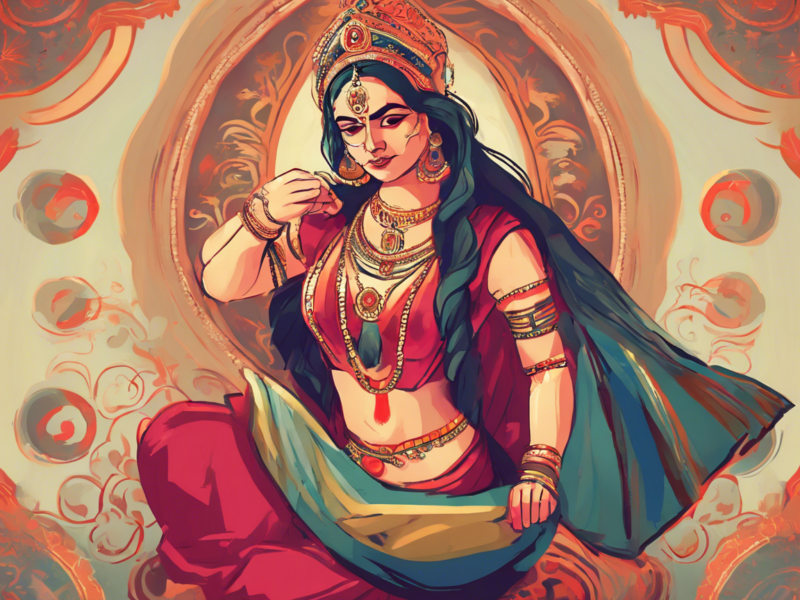Introduction
Hinduism, one of the world’s oldest religions, is rich in mythology, folklore, and sacred texts that have been passed down through generations. Among the myriad deities and mythological figures within Hinduism, the concept of the “33 Koti Devi Devta” holds a special significance. The term “Koti” in Sanskrit translates to “type” or “category,” and “Devi Devta” refers to gods and goddesses. Contrary to popular belief, the term “33 Koti” does not translate to 33 million but rather signifies a specific category or type. In this comprehensive exploration, we delve into the depths of Hindu mythology to unravel the mystical world of the 33 Koti Devi Devta.
The Concept of 33 Koti Devi Devta
In Hindu mythology, the 33 Koti Devi Devta is often misinterpreted as 33 million gods and goddesses. However, the term “Koti” here refers to categorization or types, not to be taken literally as a specific number. The 33 Koti Devi Devta concept is believed to encompass various divine entities, celestial beings, deities, and energies that embody different aspects of the cosmic order and universal harmony.
The Trinity: Brahma, Vishnu, and Shiva
At the core of Hindu belief, the Trimurti, consisting of Brahma (the creator), Vishnu (the preserver), and Shiva (the destroyer), serve as the primary manifestations of the divine. Each deity represents a fundamental aspect of existence, with Brahma symbolizing creation, Vishnu representing preservation, and Shiva embodying destruction to pave the way for new beginnings and cycles.
Goddesses and Female Deities
Within the pantheon of the 33 Koti Devi Devta, numerous goddesses and female deities hold immense significance. Devi Lakshmi, the goddess of wealth and prosperity, Devi Saraswati, the goddess of knowledge and wisdom, and Devi Durga, the fierce warrior goddess, are just a few examples of the esteemed female divinities within Hindu mythology.
Celestial Beings and Guardians
Among the 33 Koti Devi Devta, celestial beings and guardians play essential roles in upholding cosmic balance and protecting the universe from malevolent forces. Lord Indra, the king of the heavens and ruler of the gods, Varuna, the god of the oceans and water elements, and Kartikeya, the commander of the divine armies, are revered for their roles in maintaining order and harmony in the cosmic realm.
Symbolism and Allegorical Interpretations
Hindu mythology is replete with symbolism and allegorical interpretations that extend beyond literal meanings. The 33 Koti Devi Devta symbolize the multifaceted aspects of existence, with each deity embodying specific qualities, virtues, and energies that guide individuals on their spiritual paths. As such, devotees often invoke various deities based on their needs, desires, and aspirations, seeking blessings and guidance in different aspects of life.
The Significance of Worship and Rituals
Devotional practices, rituals, and worship play a vital role in Hinduism, serving as a means to connect with the divine and seek blessings from the 33 Koti Devi Devta. From elaborate ceremonies and yagnas to daily prayers and offerings, devotees express their reverence and gratitude toward the divine beings, seeking their benevolence, protection, and guidance in navigating life’s challenges and obstacles.
Common Misconceptions and Clarifications
The misconception surrounding the “33 Koti Devi Devta” as 33 million gods and goddesses is a widely propagated misunderstanding. In reality, the term “koti” signifies categories or types, encompassing a vast array of divine entities, energies, and celestial beings within Hindu mythology. By understanding the symbolic and allegorical significance of the 33 Koti Devi Devta, one can appreciate the depth and complexity of Hindu theology and cosmology.
FAQs (Frequently Asked Questions)
Q1: Are the 33 Koti Devi Devta worshipped equally, or do some deities hold more prominence than others?
A1: While all 33 Koti Devi Devta are revered in Hindu mythology, certain deities such as Brahma, Vishnu, Shiva, and the goddesses Lakshmi, Saraswati, and Durga hold greater prominence due to their roles as primary cosmic forces.
Q2: How can devotees connect with the 33 Koti Devi Devta in their daily lives?
A2: Devotees can connect with the 33 Koti Devi Devta through prayer, meditation, rituals, offerings, and observing festivals dedicated to specific deities based on their individual needs and spiritual inclinations.
Q3: Are the 33 Koti Devi Devta limited to traditional Hindu mythology, or do they have relevance in contemporary spiritual practices?
A3: The 33 Koti Devi Devta remain integral to Hindu theology and spiritual practices, serving as divine beings that embody various aspects of life, the cosmos, and the human experience.
Q4: Can devotees invoke multiple deities from the 33 Koti Devi Devta for specific blessings and guidance?
A4: Yes, devotees have the flexibility to invoke multiple deities based on their needs, aspirations, and challenges, seeking blessings and guidance from different divine beings within the pantheon.
Q5: How does the concept of the 33 Koti Devi Devta reflect the interconnectedness of the universe and the divine?
A5: The 33 Koti Devi Devta symbolize the interconnectedness of all creation, with each deity representing a unique energy or aspect of the cosmic order, highlighting the unity and diversity within the divine realm.
In conclusion, the 33 Koti Devi Devta encapsulate the diverse and multifaceted nature of Hindu mythology, offering devotees a profound framework to explore the complexities of existence, spirituality, and the divine. By delving into the symbolic meanings, allegorical interpretations, and devotional practices associated with the 33 Koti Devi Devta, individuals can deepen their understanding of Hindu theology and enrich their spiritual journeys with reverence, wisdom, and divine blessings.

